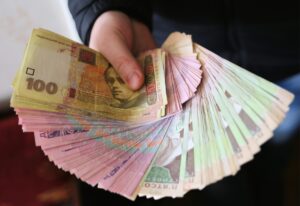What influences the discount rate in Ukraine?
The first is the cost of attracting resources by the NBU itself – placing funds of commercial and state-owned banks in certificates of deposit. Banks place these funds on an overnight basis and can earn up to 15% per annum in hryvnia. They simply accumulate balances on all their clients’ accounts. In other words, this is the maximum liquidity, as it allows them to maintain a certain profitability and even earn money, given that deposit rates are lower.
Therefore, banks continue to earn money when they raise capital from customers – individuals and legal entities – at rates that are lower than the NBU’s deposit certificates.
Second, the key policy rate should have an impact on the credit resource that the same banks have to provide to businesses or individuals. Unfortunately, this is not the case in Ukraine.
For a long time now, our credit resource has been much more expensive than the key policy rate. Thus, the correlation between the dynamics of the discount rate and the cost of loans, unfortunately, does not always work. Last year’s conditional reduction of the discount rate from 25% to 15% did not have a significant impact on the reduction of the credit resource. However, this is probably a structural problem in the banking segment.
The third thing that the key policy rate should and does affect is the cost of borrowing by the Ministry of Finance when it issues domestic government bonds.
The fourth is the NBU’s inflation control policy. The regulator tries to control prices in the market and influence inflation by using the key policy rate. The higher the key policy rate, the more expensive financing is, and the lower the demand for goods and services. As a result, prices indirectly decline.
Why did the NBU cut the key policy rate?
If the rate goes down, the credit resource is really working. This affects demand and, relatively speaking, prices should rise.
In Ukraine, annual inflation is currently below 5% year-on-year. This is even below the NBU’s target. Therefore, if we are commenting on the regulator’s decision, the latter, due to the fact that inflation is below its target, allowed itself to cut the rate.
However, the main prerequisite was probably the desire of the Ministry of Finance to reduce the cost of financial resources. That is, before the NBU’s decision, the Ministry of Finance was placing resources: for a year at 16.8% per annum, for a year and a half at 17.4%, and for two years at closer to 18%. Due to the fact that the NBU has cut the rate by 0.5 percentage points, we are likely to see placements at 16.5%, 17%, and 17.5%.
In this way, the Ministry of Finance manages to save money – saving the cost of borrowing. There is logic in this. But given the fact that we are likely to pass the inflation lows now, the NBU will not have much room to cut the rate in the future.
The only thing is that if the Ministry of Finance faces a financing problem – as we all do – and external financing does not come in, the Ministry of Finance will probably ask the NBU to reduce the cost of hryvnia resources further. In this scenario, we may still see the discount rate drop to 14-13.5%.
Source: mind.ua









